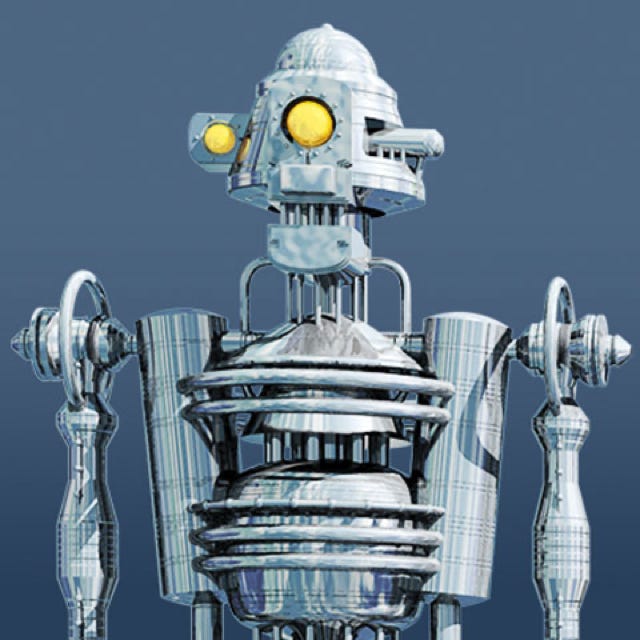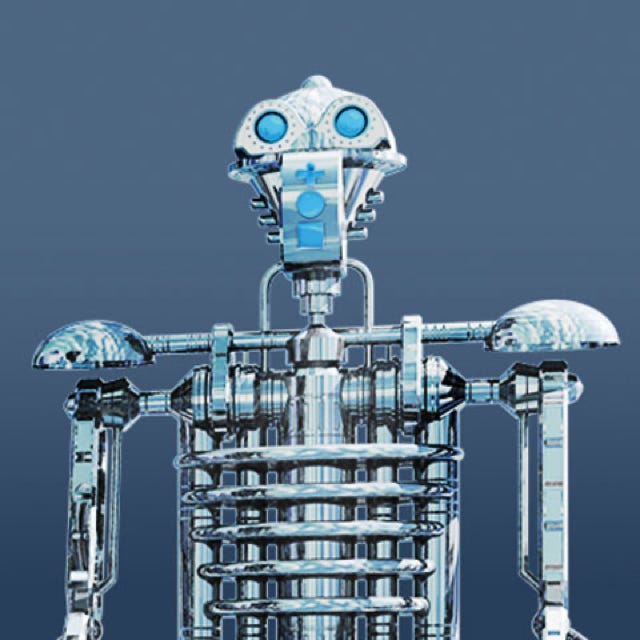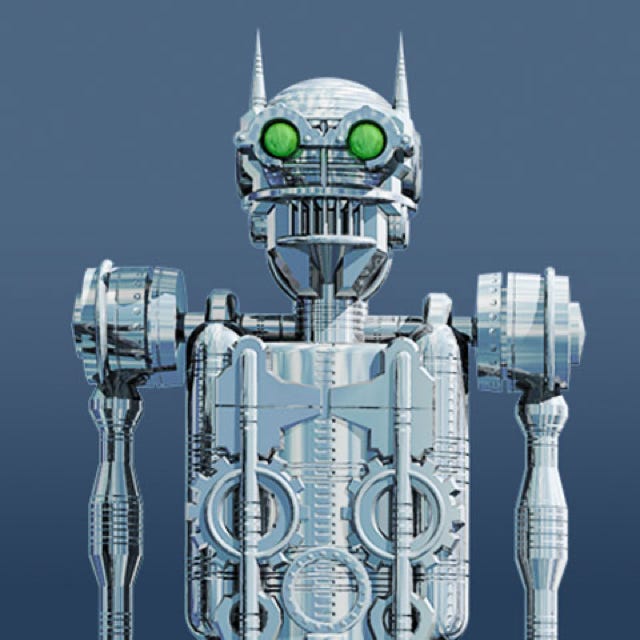THE BAND
ROBOT CITY – HOW IT ALL BEGAN…
Nike M.E. Bass, an industrial robot working in the piano industry that had rusted away in honor, met the brass specialist Lens Kimbase in 1998 in an interim storage facility for discarded metal androids.
Bass, who spent his first hours of work in an experimental laboratory for infrasound and is therefore endowed with a special talent for low frequencies, found in Kimbase, once a universal transmitter for high-frequency data transmission at the Fraunhofer Institute for Brass Instruments (Bad Dürkheim), a congenial partner for a new sound project that could be realized without any - only annoying - human intervention, and that had been on his mind since it was first installed.
Since both had built-in first-generation MIDI interfaces, they were able to communicate via this serial interface straight away and also made initial contact with external synthesizers. Early synthetic sound data did not take long to appear and was already posted anonymously online in various industry forums.
In their search for a talented clock provider, the two came in a virtual support group for androids with battery problems across Ibek Manless. Manless had been part of an offset printing press for years and still had a
precisely functioning clock generator from there, which provided the rhythmic foundation for the compositions they were creating. His nickname ‚B.P.M.‘ was not a coincidence.But it was only when the mobile frequency shifter Slem S. Beniak, who had worked for years as a jingle player in the WDR broadcasting station and was the only one of the four with a functioning 24-bit sound output, joined the trio. So the possibility arose of not only making the existing binary material directly accessible to the hearing environment in a physical-mechanical way, but also of recording it on sound/data storage devices. This was used for the first time in 2002 with the production of the ‚Scientific Romance‘ album. The ensemble was thus complete.
Four ingenious machines that have set out to be the Golden Gate Quartet of the 21st century - at least as long as the supply of spare parts is present and the capacity of the accumulators does not decrease.
Together with their anonymous assistant – the only humanoid in the team – who also provides a visual appearance for the four artists, the band presented more long players, in which they prove that electromechanical devices and classical compositions do not have to be mutually exclusive.
The complete works can be viewed here.
SLEM S. BENIAK
[S/N 9952 1516]
Manufactured at ControlSound Inc.
Operational since 11 05 1994 10h03
Operating sysem ArPOS 1.1
Developed by Arthur C. Langley
Control Engine Interface for Emu, Moon, Ensoniq devices
Recent inspection 06 20 20013
NIKE M.E. BASS
[S/N 21-56911-333]
Designed and manufactured at Urbana Intelligent Mechanics
Operational since 01 12 1999 12h34
Operating sysem halOS 2.11
Control Engine Interfaces for Moon Modular Synthesizer
Nike is fluent in Cobol and Fortran
LENS KIMBASE
[S/N 291152]
Manufactured at The Genetic Factory
Operational since 03 12 1994 14h23
Operating sysem ROS 7.7 by Acoustic Intelligence Labs
Control engine interface for Waldorf XTk, Emu E4XT, Emu e64
MTBF 6400 hours
IBEK MANLESS
[S/N M300 DH817]
Manufactured by Heuristic Algorithmic Computers Inc.
Operational since 11 27 1992 16h14
Operating sysem GitMOS IV
Control tentacles operate Gibson SG &
Fender Stratocaster via Line6 Pod
Special features programmed by Dr. Chandra



